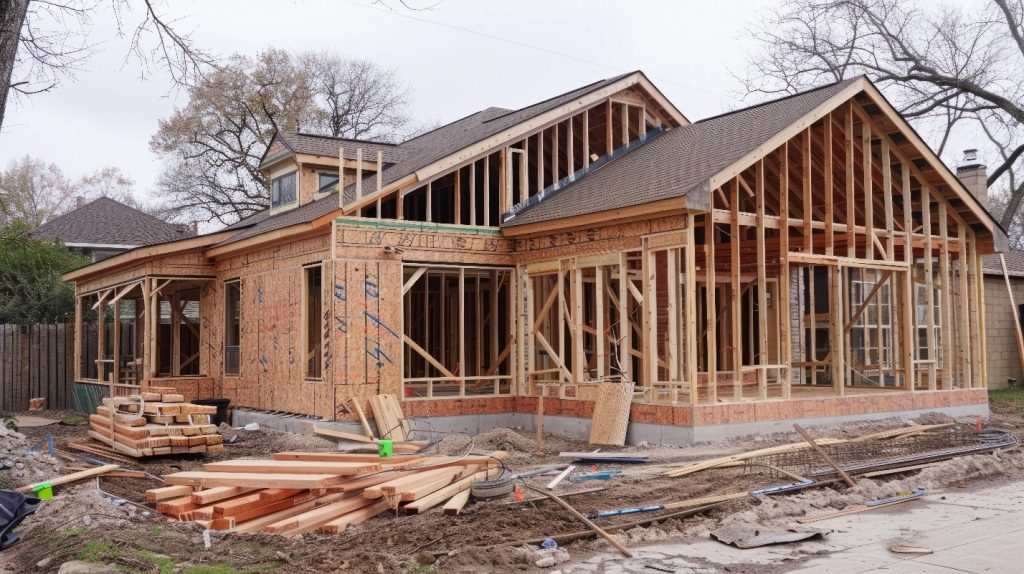Kory Habiger of Kansas Outlines The Pros and Cons of Developing vs. Flipping: Which Path is Right for You?
When it comes to real estate investing, two prominent strategies often emerge: developing properties from the ground up and flipping existing homes. Each path offers its own set of opportunities, challenges, and rewards, making it crucial for investors to thoroughly understand the differences before committing to one. Kory Habiger of Kansas, a real estate professional who specializes in home flips, will delve into the pros and cons of both developing and flipping properties, providing a comparative analysis that can help you determine which approach aligns best with your goals, resources and risk tolerance.
Understanding the Basics: Development vs. Flipping
Property Development: Property development involves taking a piece of land or an existing structure and turning it into a new, usable building. Kory Habiger of Kansas explains that this process can include everything from acquiring raw land, securing permits, designing, and constructing a new building, to renovating and expanding existing structures. Developers typically aim to create something new, whether it’s a residential home, commercial space, or a mixed-use property.
House Flipping: House flipping, on the other hand, involves purchasing an existing property, making renovations or improvements, and then selling it for a profit. Flippers generally look for undervalued or distressed properties that can be quickly updated and sold, often within a few months. Kory Habiger of Kansas highlights how the focus is on maximizing returns through strategic upgrades and market timing.
The Pros and Cons of Property Development
Pros:
- Higher Profit Potential: Developing a property from scratch or undertaking significant renovations can yield substantial profits. Since the end product is often entirely new or drastically improved, the market value can be significantly higher than the initial investment.
- Creative Control: Developers have the freedom to design and build according to their vision, which can be particularly rewarding for those with a passion for architecture or sustainable design. Kory Habiger of Kansas explains that this creative control allows for the creation of unique, high-quality properties that can stand out in the market.
- Long-Term Investment: Property development often results in assets that appreciate over time. If the market conditions are favorable, the value of a newly developed property can continue to rise, offering long-term financial benefits.
- Diversification: Developers can diversify their portfolio by engaging in different types of projects, such as residential, commercial, or mixed-use developments. This diversification can spread risk and provide multiple income streams.
Cons:
- High Initial Costs: Development projects require significant upfront capital. The costs of purchasing land, securing permits, hiring architects and contractors, and sourcing materials can add up quickly, making it a capital-intensive endeavor.
- Extended Time Frame: Developing a property is a lengthy process that can take months or even years. Kory Habiger of Kansas understands that delays due to permit approvals, construction challenges, or market fluctuations can further extend the timeline, tying up capital for an extended period.
- Regulatory and Legal Challenges: Navigating zoning laws, building codes, and environmental regulations can be complex and time-consuming. Developers must ensure compliance with all legal requirements, which can sometimes involve costly adjustments to plans or delays.
- Market Risks: The real estate market can be unpredictable, and a project that seemed profitable at the outset may face challenges if market conditions change. Developers are exposed to the risk of market downturns that could impact the final sale price or rental income.
The Pros and Cons of House Flipping
Pros:
- Quick Turnaround: One of the main attractions of house flipping is the potential for a quick profit. Successful flippers can purchase, renovate, and sell a property within a few months, generating returns in a relatively short time frame.
- Lower Capital Requirement: Compared to development, flipping generally requires less upfront capital. Investors can often finance the purchase and renovation costs, making it accessible to those with limited funds.
- Market Agility: Flippers can quickly adapt to changing market conditions by targeting different types of properties or adjusting their renovation strategies. Kory Habiger of Kansas explains that this agility allows them to capitalize on trends and opportunities in the housing market.
- Scalability: Flipping can be scaled up or down depending on market conditions and the investor’s goals. Multiple properties can be flipped simultaneously, or the investor can focus on one project at a time.
Cons:
- High-Stress and Intensive Work: Flipping is a hands-on process that requires constant attention to detail. From managing contractors to dealing with unexpected renovation challenges, the process can be stressful and time-consuming.
- Risk of Over-Improvement: Flippers must be careful not to over-improve a property beyond what the market will bear. Overspending on renovations can lead to lower profit margins or, in some cases, a loss.
- Market Dependency: The success of a flip is heavily dependent on the current real estate market. If market conditions change unexpectedly, the property may sell for less than anticipated or take longer to sell, reducing profitability.
- Financing Risks: Flippers often rely on short-term loans or high-interest financing to fund their projects. If the property doesn’t sell quickly, the cost of carrying the loan can erode profits or lead to financial strain.
Which Path is Right for You?
Kory Habiger of Kansas understands that deciding between property development and house flipping ultimately comes down to your financial resources, risk tolerance, and long-term goals.
- If you have substantial capital, enjoy creative projects, and are willing to commit to a longer timeline, property development may be the right path for you. This option offers higher profit potential and the ability to create something entirely new, but it also comes with higher risks and complexities.
- If you’re looking for a quicker turnaround, lower upfront costs, and the flexibility to adapt to market conditions, house flipping might be a better fit. Flipping allows for quicker returns and can be a less capital-intensive option, but it requires a keen understanding of the market and the ability to manage fast-paced projects.
In conclusion, both property development and house flipping offer unique opportunities for real estate investors. Kory Habiger of Kansas emphasizes that by carefully considering the pros and cons of each approach, you can choose the path that best aligns with your personal and financial goals, setting yourself up for success in the competitive world of real estate.






